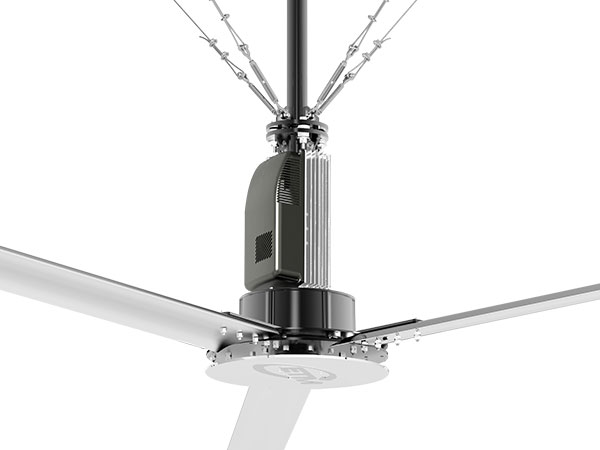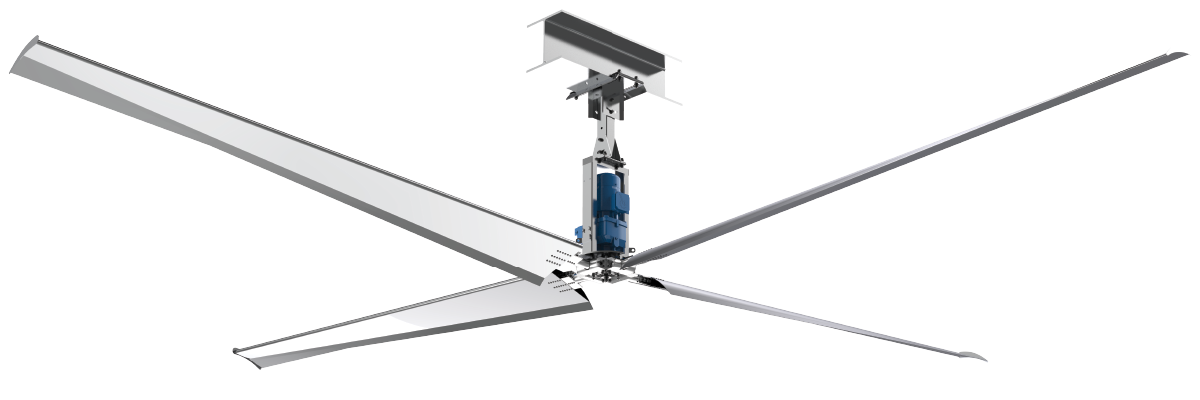
High Volume Low Speed (HVLS) fans are vital assets in industrial and commercial spaces such as warehouses and manufacturing plants, circulating large amounts of air efficiently. Two key types of motors power these fans: AC (Alternating Current) and DC (Direct Current), each possessing distinctive characteristics that influence their performance and application appropriateness.
HVLS fans with AC motors, powered by periodically reversing current flow, are widely used due to their simplicity, efficiency, and widespread availability. Their capacity to operate at high speeds proves beneficial in facilitating air circulation over vast distances. A significant upside of AC motor HVLS fans is the easy control offered by variable frequency drives (VFDs), electronic devices that modify the AC power's frequency and voltage supplied to the motor for precise speed control. This proves particularly beneficial when adjusting airflow or adapting the fan to varying temperature or humidity conditions. These fans are also low maintenance, with no brushes or commutators to wear out over time. However, their efficiency may decrease at low speeds.

DC motor HVLS fans, powered by unidirectional current flow, may not be as common as their AC counterparts but exhibit unique characteristics making them suitable for specific scenarios. Notably, DC motors excel in energy efficiency at low speeds, rendering them ideal for energy-conscious settings or instances where the fan operates at low speeds for long durations. Additionally, DC motors generally produce less noise than AC motors. Nevertheless, their manufacture is more complex and costly, and they necessitate more specialized control equipment.